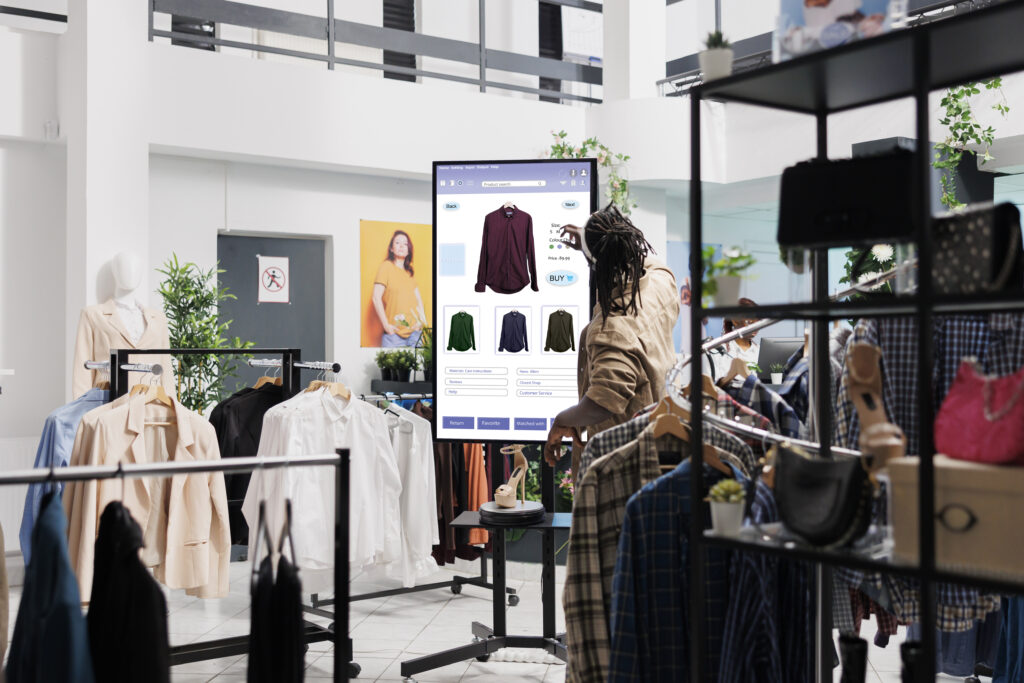Seamless Retail Bliss: Online-to-Offline Retail with Reserve Online, Pay In-Store
25/03/2024
888
Table of Contents
Online-to-Offline (O2O) retail seamlessly blends digital and physical shopping, catering to modern consumers’ preferences. Recognizing the importance of both online convenience and in-person engagement, O2O enables effortless transitions between virtual and real-world experiences.
Among 13 commonly-used strategies, Reserve Online, Pay In-Store (ROPIS) is a top key strategy. It allows customers to reserve items online and complete transactions in physical stores, offering added convenience and improved inventory management.
However, implementing ROPIS requires addressing security and logistical challenges. Nonetheless, by ensuring a seamless customer journey, ROPIS enhances overall satisfaction and loyalty in the O2O retail landscape.
Online-to-Offline (O2O) retail effortlessly merges digital and physical shopping, meeting the changing needs of modern consumers. It enables shoppers to start online, browsing products digitally, and seamlessly transition to in-store experiences.

O2O acknowledges the benefits of both online convenience and in-person engagement, allowing consumers to switch between virtual exploration and real-world interaction effortlessly.
By combining online and offline strengths, O2O retail delivers unified shopping experiences, building stronger brand connections and catering to the diverse preferences of today’s shoppers.
So what is Reserve Online, Pay In-Store (ROPIS)?
In the previous article, we have mentioned 13 Commonly-Used Strategies, and Reserve Online, Pay In-Store is one of the most common one a business might take a look.
A short definition…
ROPIS (Reserve Online, Pay In-Store) transforms the Online to Offline (O2O) shopping experience by enabling customers to reserve their desired items online and finalize their transactions in physical stores.

With ROPIS, shoppers can browse and select products from the comfort of their homes or on-the-go, securing their purchases digitally before heading to the store for a seamless checkout process.
Enhancing the O2O Shopping Experience with ROPIS
This not only simplifies the purchasing process but also ensures that the desired items are available upon arrival, enhancing customer satisfaction and loyalty.
Let’s get dive in: Reserve Online, Pay In-Store
ROPIS: A Seamless Shopping Solution
ROPIS (Reserve Online, Pay In-Store) bridges the gap between the Online to Offline (O2O) shopping experience, empowering customers to effortlessly reserve their preferred items online and complete their transactions in physical stores.
This approach introduces a convenient and flexible dimension to shopping, as customers can browse and select products digitally at their convenience and then seamlessly transition to the tactile in-store environment for finalizing their purchases.
Benefits for Consumers and Retailers
ROPIS (Reserve Online, Pay In-Store) offers a multitude of benefits for both customers and retailers, enhancing the Online to Offline (O2O) shopping landscape.
For shoppers, ROPIS provides added convenience and flexibility by allowing them to reserve products online and complete their purchases in-store, aligning seamlessly with their preferences and schedules. Moreover, by streamlining the shopping process, ROPIS reduces the incidence of abandoned carts and ensures product availability, thereby enhancing customer satisfaction.

On the retailer side, ROPIS facilitates improved inventory management and increased foot traffic, as customers are incentivized to visit physical stores to finalize their purchases. This convergence of online convenience and offline engagement not only fosters stronger customer relationships but also drives sales and business growth in the dynamic O2O retail environment.
How ROPIS Enhances the O2O Shopping Experience
Convenience for Customers
Reserve Products Online Customers can browse and reserve products online at their convenience, eliminating the need to visit multiple stores in search of desired items
- Reserve Products Online – Customers can browse and reserve products online at their convenience, eliminating the need to visit multiple stores in search of desired items.
- Seamless Transition to In-Store Experience – Upon arrival at the store, customers enjoy a seamless transition from their online browsing experience to the tactile exploration of products, enhancing overall satisfaction.
Flexibility in Payment
- Secure Payment Options ROPIS offers secure payment options, ensuring peace of mind for customers when finalizing their purchases in-store.
- Ability to Utilize In-Store Discounts and Promotions Customers can take advantage of in-store discounts and promotions when completing their purchases, maximizing savings and enhancing the overall value proposition.
Improved Inventory Management
- Reduction of Abandoned Carts By allowing customers to reserve products online, ROPIS significantly reduces the incidence of abandoned shopping carts, leading to higher conversion rates and increased revenue.
- Enhanced Customer Satisfaction Through Product Availability Retailers can better manage their inventory and ensure product availability, thereby enhancing customer satisfaction and loyalty.
Overcoming Challenges and Concerns
Addressing Security and Privacy Issues
Ensuring the security and privacy of customer data is paramount for retailers as they implement Online to Offline (O2O) strategies like ROPIS (Reserve Online, Pay In-Store).

By safeguarding against potential threats and adhering to stringent privacy measures, retailers can instill confidence and trust among shoppers. This trust is essential for fostering long-term customer relationships and encouraging continued engagement with the O2O retail ecosystem.
Moreover, prioritizing data security not only protects customers but also safeguards the reputation and integrity of the retailer’s brand, demonstrating a commitment to ethical business practices in an increasingly digital world.
Managing Inventory and Fulfillment Logistics
Efficient inventory management and seamless fulfillment logistics play a pivotal role in ensuring the success of Online to Offline (O2O) strategies such as ROPIS (Reserve Online, Pay In-Store).
This necessitates a harmonious coordination between online and offline operations to ensure that products reserved online are readily available for in-store purchase.
This seamless integration not only enhances the customer experience but also optimizes operational efficiency, laying the foundation for sustainable growth and profitability in the dynamic O2O retail landscape.
Ensuring a Seamless Customer Journey Across Channels
Creating a seamless and cohesive customer journey across both online and offline channels is imperative for retailers operating in the Online to Offline (O2O) landscape.
This entails minimizing friction points and optimizing every touchpoint of the shopping experience to ensure consistency and convenience for customers. By integrating online and offline channels seamlessly, retailers can provide customers with the flexibility to browse, purchase, and engage with their brand across multiple platforms effortlessly.
Whether customers choose to interact digitally or in-person, maintaining consistency in branding, product information, and service quality is key to fostering trust and loyalty.
Conclusion
Reserve Online, Pay In-Store emerges as a game-changer in the realm of O2O retail, offering unparalleled convenience, flexibility, and satisfaction to both customers and retailers alike.
As the retail landscape continues to evolve, ROPIS stands poised to shape the future of shopping, elevating the overall shopping experience to new heights of excellence.
Customize your own Reserve Online, Pay In-Store strategy with SupremeTech!
SupremeTech specializes in bridging the divide between online and offline commerce for major retail corporations globally.
Contact us for your own solutions!
Related Blog





















